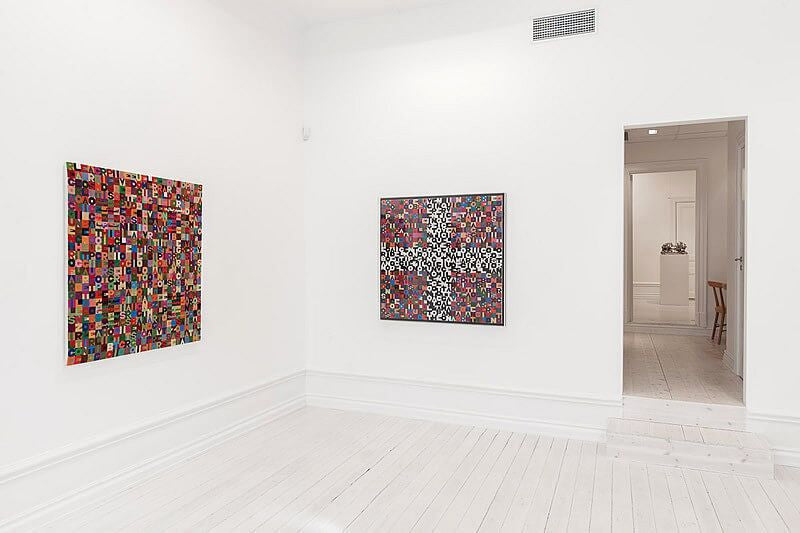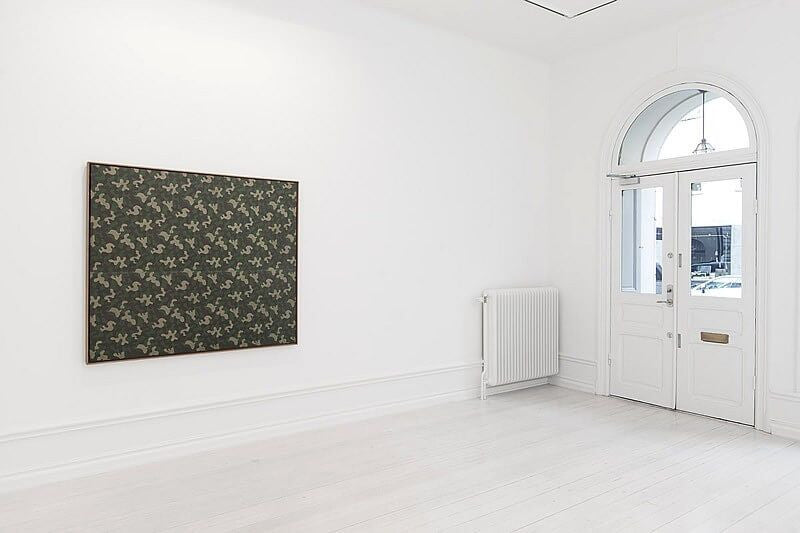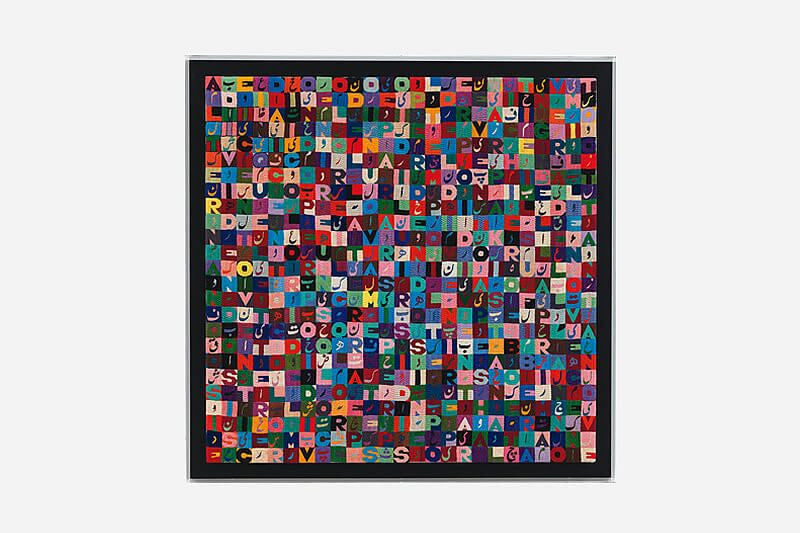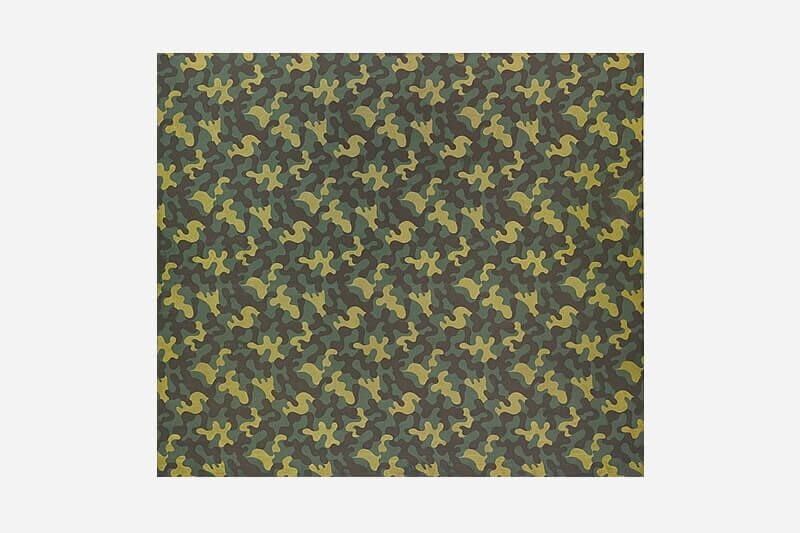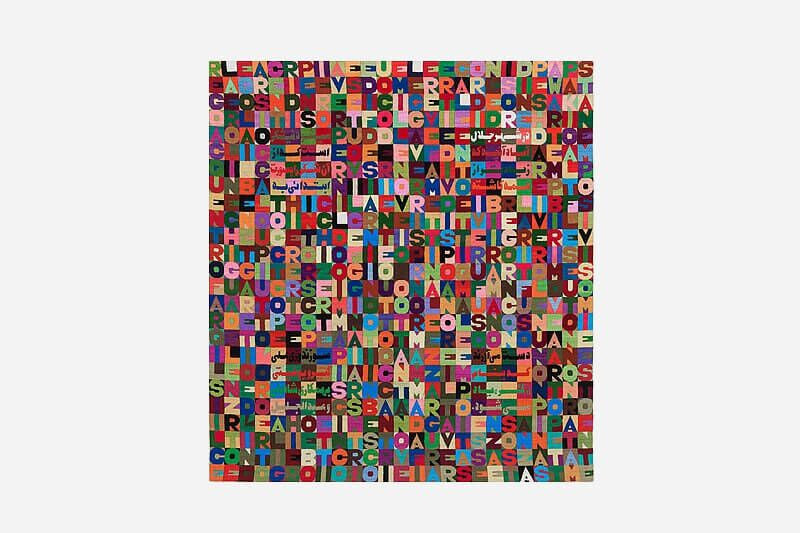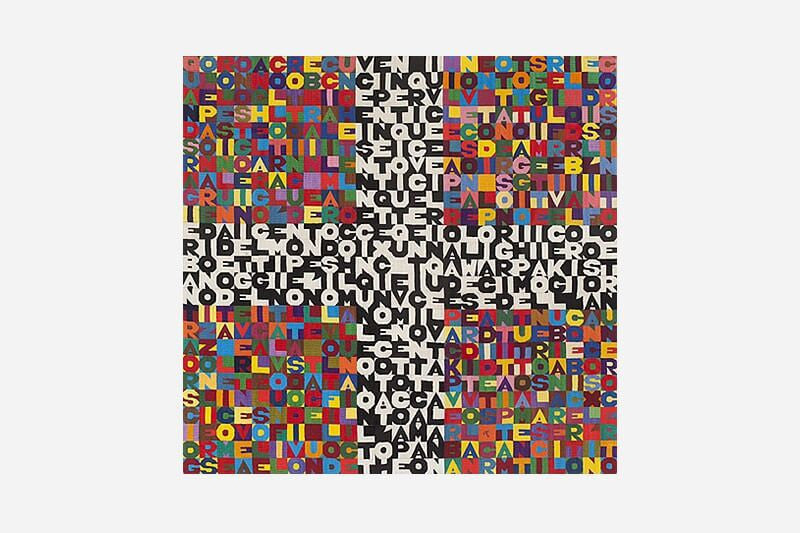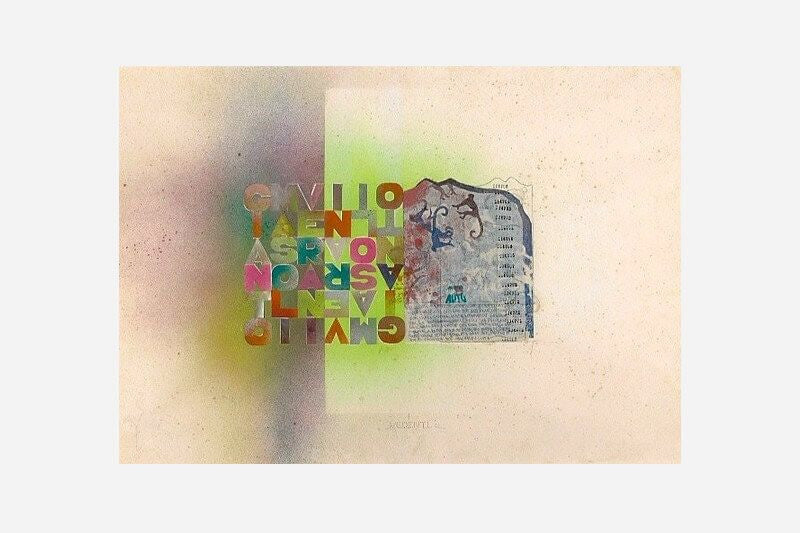ALIGHIERO BOETTI: SELECTED WORKS
Stockholm: April 3 - May 21, 2014
Press Release:
Born in Turin, Alighiero Boetti (1940–1994) was introduced to the art world in the mid-1960s as part of the Italian Arte Povera movement. However, his artistic legacy extends far beyond this early association. Deliberately distancing himself from the group that helped establish his reputation, Boetti began to explore various ways of working collaboratively in the 1970s. Realizing artworks in association with collaborators - ranging from artisan embroiderers in Afghanistan for his well-known “Mappa” series (1971 - 1994) to the Italian postal system (Postal Dossier, 1970 - 1974) - Boetti came into his own by cultivating diverse creative activities that challenged the notion of the artist as a lone creator working in a singular style. Further complicating notions of authorship concerning artworks that bare Boetti’s signature, the artist also devised complex systems whose rules and restrictions would predetermine, to a certain extent, the outcome of his work. Relishing the uncontrollable results - or felici coincidenze (happy accidents), as the artist himself referred to them - that resulted from outsourcing production or imposing a strict systematic structure, Boetti developed a visually varied oeuvre that is unified by the coexistence of logic and randomness. Bringing together four works from the 1980s, the current exhibition at McCabe Fine Art highlights examples from some of Boetti’s most important collaborative series.
As early as the 1960s, Boetti began making works using fabric printed with a mimetico (camouflage) motif, notably pre-dating Warhol’s famous “Camouflage” self-portrait series of the mid-1980s by two decades. Strongly influenced by Marcel Duchamp, Boetti took this ready-made abstraction and presented it as a painting, mounting the fabric on a stretcher-like canvas. Looking at Mimetico, 1981, with its orderly and repetitive all-over green and brown patterning, it is easy to see why the mass-produced methodical design would have interested Boetti both conceptually and aesthetically.
From the mid-1970s onward, Boetti’s colorful mosaic-like “word squares” would expand into one of the artist’s most iconic system-based series. Organizing uppercase block letters into gridded squares, Boetti spells out words, typically idiomatic expressions like “Silence is golden” or “Give time to time” in Italian. Three examples of such works are included in the present exhibition. Gian Tomaso Liverani, 1980, a delicate mixed-media work on paper is the loosest of the three and is titled for the owner of Rome’s La Salita gallery. Here the gallerist’s name is written twice across a 6 x 6 grid, legible reading downward from the upper left corner and again reading upwards (and backwards) from the lower right corner. A group of monkeys, whose whimsical presence and random configuration contrasts with the strict orderliness of Boetti’s word square, exemplifies the artist’s interest in the coexistence of order and disorder. The monkeys also foreshadow the site-specific installation Boetti made for the 1990 Venice Biennale, which featured a variety of animals (including monkeys) in frieze form. An untitled embroidered work from 1988 features Boetti’s typical square grid of rainbow block letter. An example of the artist’s “Arazzi Grandi” (large tapestries), whose format is based on a grid of 25 x 25 square-bound letters, the artist here plays with his own conventions by breaking down the main square into smaller square sections using a black and white cross (comprised of black and white block letters) to divide the otherwise colorful composition into four equal 10 x 10 word squares. Alternandosi e Dividendosi, 1989, another embroidered work, mixes the Roman alphabet and Farsi script in a nod to the Afghan craftswomen who made this and many other arrazi according to Boetti’s designs. The words “alternandosi” (alternating) and “dividendosi” (dividing) are legible starting from the upper left corner. As the title suggests, each Roman block letter alternates with a Farsi character therefore dividing the grid between Italian and Farsi.
Similar to the spirit of collectivity behind Warhol’s factory, Boetti’s practices of appropriating ready-made materials, employing artisanal expertise, and imposing a systematic structure to create his works all served to integrate the artist’s creativity with the skills and means of others. What sets Boetti’s works apart, however, is that each one calls upon the viewer to assume the role of a final collaborator. Assuming his audience’s active participation, Boetti relies on us to play his games and decipher his codes.
McCabe Fine Art
Noted art advisor, dealer and collector Paul Frank McCabe opened McCabe Fine Art in Stockholm, Sweden in 2013. An extension of his eighteen years of art market experience and connoisseurship, the beautifully renovated showroom in central Östermalm presents works by modern and contemporary masters as well as emerging talents. Through a program of curated, thematic and monographic exhibitions, McCabe Fine Art brings new voices to Scandinavia’s dynamic international art scene.
For more information, please contact us at paul@mccabefineart.com or +46 (0)709 99 77 46.


